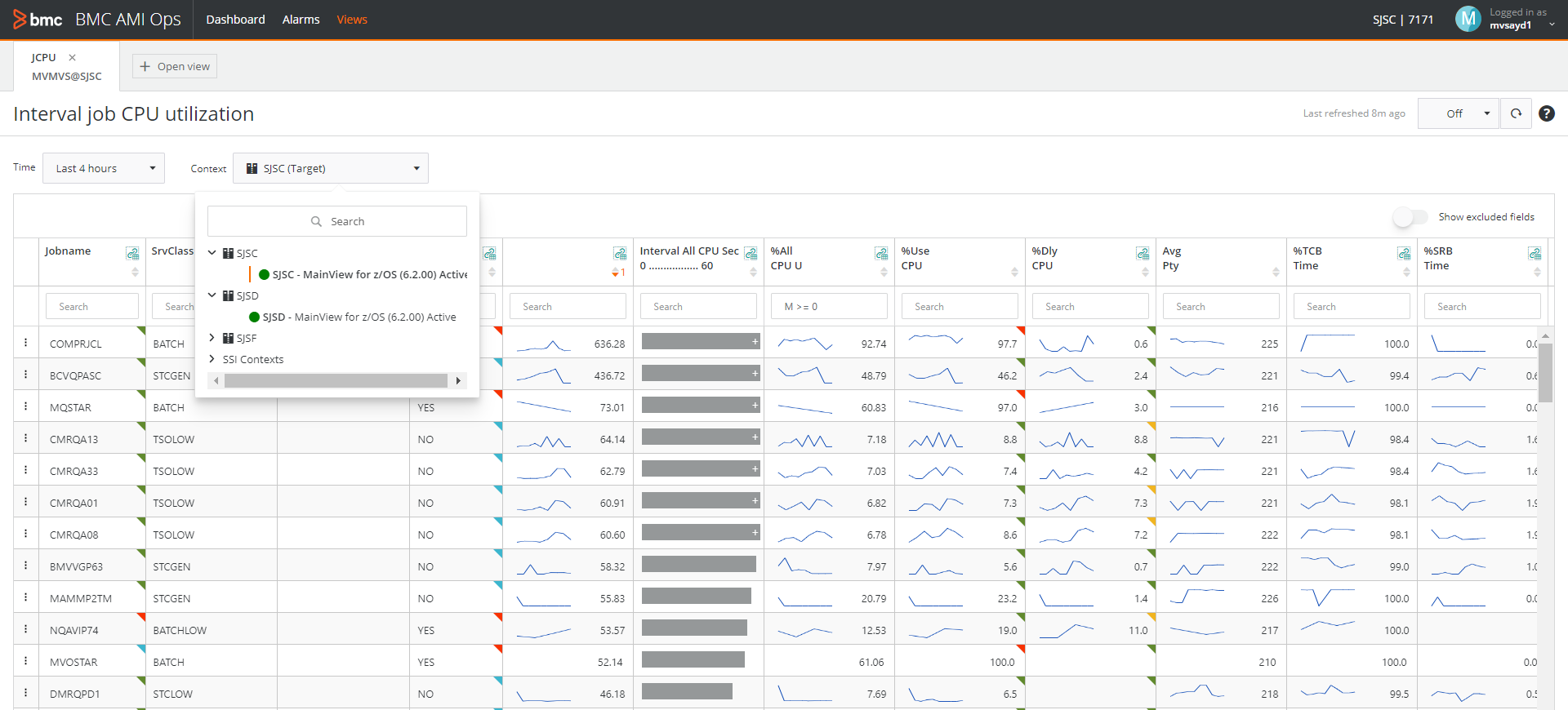With recent advances in mainframe technology, we now have endless opportunities to run modern applications on the platform. There are new DevOps, artificial intelligence (AI), and machine learning (ML) tools and IBM has provided the ability to zIIP (system Z Integrated Information Processor)-enable most Java workloads. That, plus the ability to run Rest APIs, web servers, and containerized applications on the mainframe through z/OS container extensions make the mainframe product development space more compelling than ever.
These latest technologies also create new challenges for product developers innovating products for the customers. In this blog, I’ll highlight some of the challenges we faced while delivering the user interface (UI) of BMC AMI Ops and how we tackled them.
Choose the right server
Before developing the modern UI application for the mainframe, it’s important to select the correct server for hosting the application. Available options include Dovetail Tomcat, Liberty Server, WebSphere application server, embedded Tomcat, and many more.
We choose the server that will ensure the best customer experience in terms of:
- Security standards and prior case studies related to secured client/server communication
- Optimum CPU consumption—we monitor the performance of the servers through the BMC AMI Ops Monitor solutions.
- Reducing the number of server-started tasks that customers must configure
- Ensuring support for mainframe security protocols such as application transparent transport layer security (AT-TLS)
- Ease of maintenance and configuration
UI best practices and approach
At BMC, we have an extensive knowledge of developing world-class UIs, and we use this experience to ensure that we follow market-leading best practices. Different groups within BMC, including research and development; user experience (UX) designers, and product management work together to provide the most intuitive user interactions. We also:
- Conduct detailed research of UX design to provide ease of use for different UI personas
- Standardize UI components across all BMC products
- Improve performance with state management
- Ensure secure client and server interaction with mandatory security testing
- Use the best DevOps processes such as end-to-end automation and automatic deployment of every change
- Usage of latest UI technologies like Angular 10, HTML 5, and Grafana
- Ensure support for multi-operating system devices and desktop browsers
These screens from the new BMC AMI Ops UI demonstrate switching between monitored mainframe components and historical data display:

As shown above, the target for the user who wants to monitor the CPU usage can easily be selected from the dropdown. The historical data is shown in trend analysis to give more information about the CPU consumption across the selected period; this level of data about interactions and representation is not available in previous-generation UIs.
Ensure security compliance
Secure client/server integration is a top priority for our customers, so we recognize the importance of supporting secure sockets layer (SSL) protocols and digital certificates. Many of our mainframe customers use the system authorization facility (SAF) security that is provided within the mainframe and prefer to use those methods for secured protocol support, so we provide assistance to our customers to configure the BMC AMI Ops UI, Common Rest API, and other modern UI products with SAF keyrings, as well as certificates on the USS file system.
We also ensure that the servers used for product development follow security protocols and can accept the SAF keyrings that are connected to the CA certificates for the SSL protocol support. The steps to configure our servers with the SAF keyrings are documented here.
At BMC, we have zero tolerance for any security vulnerabilities and our dedicated Product Security Group (PSG) conducts mandatory testing, including penetration testing, and zero outstanding issues are allowed before every product release to eliminate potential security vulnerabilities in new product configurations.
Control and minimize CPU consumption
CPU consumption is one of the top priorities for any mainframe setup. Modern technologies running on the mainframe can sometimes increase and overwhelm CPU consumption if they are not optimally used. There are some steps you can take to control and minimize CPU consumption, including:
- Use the diagnostic views in BMC AMI Ops Monitoring solutions to make sure that the new product is not causing any major changes in the CPU consumption, including the deviation in CPU consumption at each stage. This sample diagnostic view shows CPU consumption.
- Study and inform customers about how the zIIP effectively offloads most of the workload running on the mainframe.
- Reduce the number of tasks started by the new product and ensure that their components are lightweight and do not have any memory leaks.
- Ensure that CPU consumption is within acceptable limits for every incremental release.
Simplify customer installation
Another important consideration is the complexity involved in the installations and deployment. The SMP/E process is quite different from the usual installation workflow that modern applications and packages expect, so we need to make sure that we minimize those complexities for our customers when they’re installing and configuring the product. Some of the ways we make our customer’s installation experience seamless are:
- Following the same standard installation process used by other BMC AMI Ops product installations
- Providing the customer with the HOLDDATA to ensure they are aware of the information required for the installation
- Automating as many steps as possible in the installer with default settings to ensure smooth product configuration
- Giving ample information in the installer itself and making the install panels self-explanatory
- Providing the support group with installation guide documentation and troubleshooting tips for handling common issues
The steps above are just a few of the ways we address customer security, CPU consumption, installation complications, and post-deployment product configuration concerns as we develop world-class, modern mainframe solutions now and in the future. We also maintain continuous interaction with customers, from the point of concept through to delivery to ensure that we include the features that they need most, when they need them.
To learn more about BMC and the modern mainframe, visit https://www.bmc.com/it-solutions/bmc-ami-ops.html.
These postings are my own and do not necessarily represent BMC's position, strategies, or opinion.
See an error or have a suggestion? Please let us know by emailing blogs@bmc.com.







